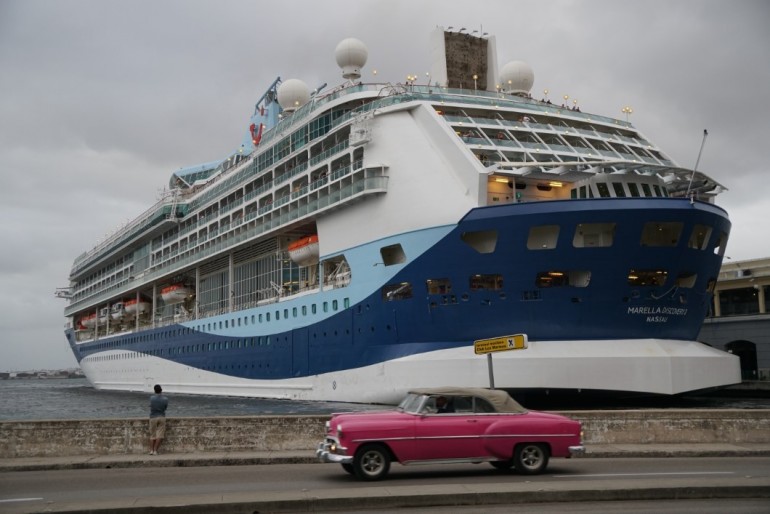Sponsored Listings:
Cruise tourism to Cuba is at its peak: the country is committed to the benefits of the cruising industry as an integral part for tourism in order to rescue its weakened national economy.
The cruise lines are now operating in a new market in the Caribbean, pursuing their goal for an ever-growing amount of passengers, ships and revenues, and both the cruise and the island country have been spared from “Trump’s rage”, the US President’s measures announced in June of 2017 to rollback the relations with Cuba that, at the appropriate time, exonerated cruise lines and airline companies alike.
Cuba’s international tourism has experienced a sustained growth in the last five years, partly thanks to the measures approved by former president Barack Obama during his term, which since 2015 relaxed a number of restrictions on travels to Cuba for American citizens. The growth rate of international visitors in the last three years has been ranging from 14% to 17%, some of the highest figures in the Caribbean, and in 2017, it reached over 4,690,000 tourist arrivals.
Part of this growth has seen the arrival of passengers on cruise ships skyrocket since 2015, when the Obama administration lifted the restrictions that prohibited ships that made port-of-calls in Cuba from going near US ports, thus making it easier for American cruise lines to include Cuba in their sailing itineraries.
Between 2015 and 2017, cruise tourism to Cuba increased fifteen fold, reaching over 437,000 passengers. In the first quarter of 2018, the country reported 136,138 arrivals, representing a 28.6% increase in comparison to the same period in 2017. Out of these, 25,040 arrived from the United States, twice as much as in the January-March period of the previous year. This is despite a 7% drop in the total number of foreign visitors and a 43% decrease of American visitors, during the first three months of 2018.
Even so, the number of cruise passengers is rather small compared to the amount of long-stay tourists, although it is still a growing segment: going from less than 1% until 2015 to 11% total international visitors in 2017.
Cuba’s revenues from cruise tourism stem from four main sources: tax per passenger (also known as head tax) paid at every port, port services, land expenses for passengers and crew members, and jobs generated both on board and on land. According to Aries Transporte Co., the Cuban company in charge of cruise operations in Cuba, the total revenues for Cuban state-owned companies during the 2016-2017 cruise season amounted to $8.6 million, which represents less than 3% of total revenues from international tourism, which was approximately $3 billion in that period.

The passenger’s main expenditure goes to the cruise line, both what is covered in the package and an extra on board, which is a significant amount. According to a study conducted by the Florida-Caribbean Cruise Association (FCCA) in 2010, cruise passengers spend an average of $1,770 per person each week for their trip, including on-board and on-land expenses, yet land expenditure averaged only at $103.83 per passenger visit in the 35 Caribbean destinations.
On the contrary, despite the claims of cruise lines, passengers rarely return to visit the country. While destinations are a major factor to sell cruises trips, the amount of passengers that return as long-stay tourists is minimal, to the point they can be considered two different market segments.
Source: tourism-review.com










